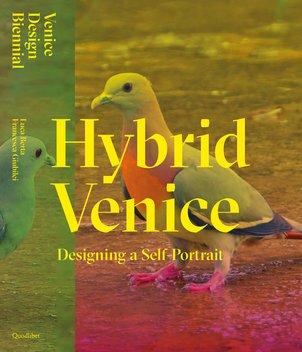
for VDB
The images of Venice that you see in some portions of this book are not photographic reproductions of Venice in the usual sense, but visual alterations of the image / imaginary of the city. These pictures are produced with the use of artificial intelligence techniques such as hybridisation from vast databases driven by a ‘genetic makeup’, or the pure generation of pictures from a text string. But also, techniques inspired by hyperphotography, kaleidoscopy, and all the methods of manipulation and post-production that the advent of the equivalence between image and information configured in bytes originated.
Those sequences, at times perturbing and bizarre, of a non-existent Venice (titled This Venice doesn't exist if it were an online project) as no real place corresponds to it - those sequences would like to be the con-text of this Venice Design Biennial. As if, moving from one exhibition to another in the territory of a city where you are not physically present, you crossed perceptive spaces characterised by the visual stereotypes of Venice, made to explode in the flow of consumption and the reworking of online images. Perhaps, walking through those calli and those visual bridges, however unusual, will ultimately constitute an authentic experience of the Venetian context in this strange era, in which we often could not walk in our cities, but only observe visual flows on the screens. The photographs of the real exhibitions will instead constitute a map of reassuring islands, where the presence of the pieces and installations is reproduced ‘faithfully’, if it makes sense to say so, in the dialogue with the spaces that host them.
The book, which brings images back to an object nature, remains a highly effective form of offering a remote experience in terms of space and time, but contained within less permeable contextual boundaries when compared to the online realm.


"Hybrid Venice. Designing a Self-Portrait"
By Luca Berta, Francesca Giubilei
Curated by Venice Design Biennial
Graphic design and images: Sebastiano Girardi Studio
Exhibition photos: Federico Floriani
Publisher: Quodlibet Edizioni
Buy the print version on Quodlibet, Amazon, ibs, Libreria Universitaria, La Feltrinelli, Ubik, and in many independent bookshops.
Read and download the digital version here.